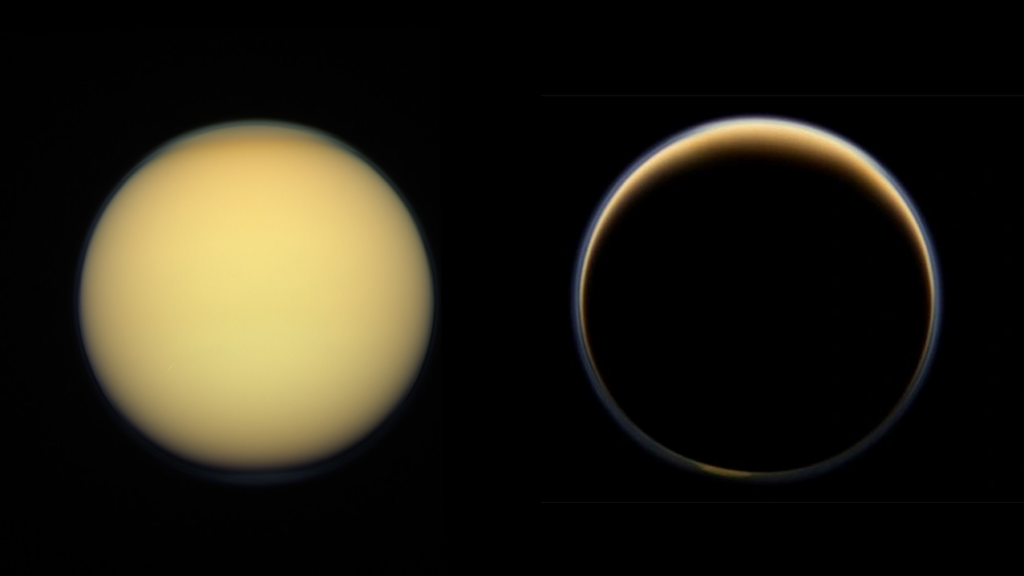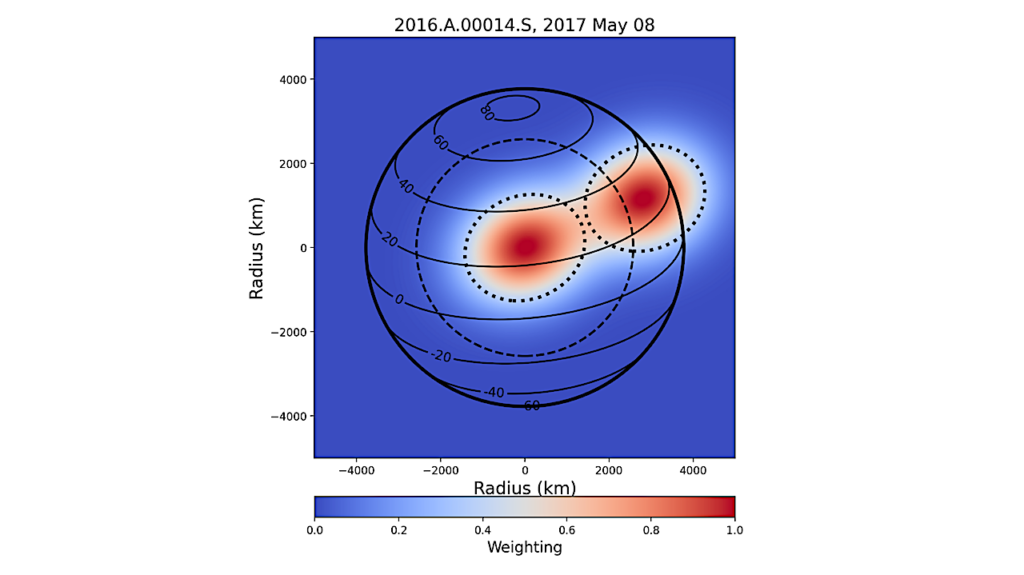Detection of CH3C3N in Titan's Atmosphere

Titan harbors a dense, organic-rich atmosphere primarily composed of N2 and CH4 , with lesser amounts of hydrocarbons and nitrogen-bearing species.
As a result of high sensitivity observations by the Atacama Large Millimeter/submillimeter Array (ALMA) in Band 6 (∼230-272 GHz), we obtained the first spectroscopic detection of CH3C3N (methylcyanoacetylene or cyanopropyne) in Titan’s atmosphere through the observation of seven transitions in the J=64→63 and J=62→61 rotational bands.
The presence of CH3C3N on Titan was suggested by the Cassini Ion and Neutral Mass Spectrometer detection of its protonated form: C4H3NH+, but the atmospheric abundance of the associated (deprotonated) neutral product is not well constrained due to the lack of appropriate laboratory reaction data. Here, we derive the column density of CH3C3N to be (3.8-5.7)×1012 cm−2 based on radiative transfer models sensitive to altitudes above 400 km Titan’s middle atmosphere.
When compared with laboratory and photochemical model results, the detection of methylcyanoacetylene provides important constraints for the determination of the associated production pathways (such as those involving CN, CCN, and hydrocarbons), and reaction rate coefficients. These results also further demonstrate the importance of ALMA and (sub)millimeter spectroscopy for future investigations of Titan’s organic inventory and atmospheric chemistry, as CH3C3N marks the heaviest polar molecule detected spectroscopically in Titan’s atmosphere to date.
A. E. Thelen, M. A. Cordiner, C. A. Nixon, V. Vuitton, Z. Kisiel, S. B. Charnley, M. Y. Palmer, N. A. Teanby, P. G. J. Irwin
Comments: 17 pages, 6 figures, 2 tables. Accepted in ApJ Letters
Subjects: Earth and Planetary Astrophysics (astro-ph.EP)
Cite as: arXiv:2010.08654 [astro-ph.EP] (or arXiv:2010.08654v1 [astro-ph.EP] for this version)
Submission history
From: Alexander Thelen
[v1] Fri, 16 Oct 2020 22:27:14 UTC (412 KB)
https://arxiv.org/abs/2010.08654
Astrobiology, Astrochemistry,








